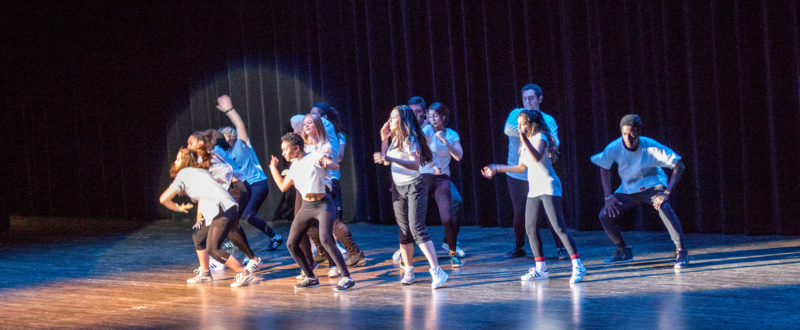Trinity’s Filipino Student Association (FSA) hosted the 12th annual Mabuhay festival last Friday in celebration of Filipino-American History Month. The event honored both traditional and contemporary elements of Filipino-American heritage through dance and food.
“I think it’s important to have these cultural performances in order to bring to light the different backgrounds and traditions that people grew up with,” wrote senior neuroscience major and FSA president Erika Salarda in an email interview. “This show gives people from different backgrounds the opportunity to participate and learn these very cool dances that they may have never been exposed to, and to try foods from a different place that they may not have known existed!”
“For non-Filipino students, Mabuhay gets them engaged with the culture to see how diverse Asia is,” said sophomore psychology major and FSA cultures chair Arielle Matic. “Food is one fun and entertaining way to expose students to Filipino culture while becoming more informed at the same time.”
Served immediately after the dance performances finished, the Filipino dishes caused almost the entire audience to line up, wrapping around Laurie Auditorium’s circular hallway and doubling back into the auditorium.
The dance portion of the event consisted of nine student-choreographed performances inspired by the wide array of Filipino-American cultures. Some performances even incorporated non-Filipino-American elements, like the dance celebrating Korean pop music. From the traditional “Sayaw Sa Bangko” to Loon-E Crew’s Bruno Mars crowd-pleaser, the dances covered the culture’s roots from precolonization to its present-day, multicultural identity.
“Sayaw Sa Bangko,” or “Bench Dance,” consisted of pairs of dancers on narrow wooden tables gracefully balancing the partner dance with hopping from table to floor. The stakes became higher, literally, as the tables are stacked on top of each other and the dancers performed in a pyramid formation.
“This was the first time in about three years that this performance was shown at Trinity,” Salarda wrote. “We decided to include it in order to balance out the traditional and modern performances.”
For the most part, that balance was apparent throughout the night by the mixture of performances that honored either a traditional element of Filipino culture or modern, multicultural Filipino-American culture. One dance achieved a balance between both the traditional and contemporary identity simultaneously by combining traditional Filipino and modern American music. “Tinikling” usually consists of dancing between long sticks on the floor, which are moved similar to jump ropes.
“I helped choreograph this year’s “˜Tinikling,’ “ Matic said. “In the dance, we’re supposed to symbolize birds dancing between sticks.”
The dance was both enchanting and exciting, its quick pace was complimented with the rhythm of the moving dancers and sticks. However, halfway through this year’s rendition of “Tinikling,” the Filipino folk music switched to Beyoncé’s “Partition.” The stick movement became faster and harsher to align with the beats of the song and the crowd, transfixed by the rhythm of the first half, erupted at the sudden switch.
“We wanted to show the audience traditional Filipino culture but give it a modern twist,” said junior neuroscience major and FSA secretary Christina Guo. “It was a hard dance to learn and there were a lot of bruised ankles involved, but we had a great time performing it.”
“Filipino culture, itself, is a mixture of Spanish and indigenous Filipino traditions. Add in Western tradition and cultures from the U.S., and you have a unique culture that is distinctly Filipino-American,” Salarda wrote. “It both overlaps and is separate from traditional Filipino culture and a purely American culture.”







